Week 6 (6th – 12th March) – Enhancement Week:

Since it was enhancement week, we decided to have a teams meeting to decide on how to take the game forwards.
After choosing Marine Majesty as our game, I offered to create one of the three levels we were planning to make. I ended up being assigned the expanse level, which is the second level in the game and is essentially a huge cave system.
Week 7 (13 – 19th March) – Research:
Before I could create my level, I felt as though some research into what underwater caves look like was necessary.

Therefore, I created a Padlet, where I collected various different images – both from real life and video games such as Subnautica.
Through this research, I was able to not only see how the caves and creatures within them looked, but also subtle details – such as how the lighting should look and behave.
With my team, we discussed which aspects we liked best from these photos and what I should include in my level to replicate the beauty of some of these images.
Link to Expanse Padlet : https://en-gb.padlet.com/econyers2021/expanse-padlet-d85k40lxw0d3gpal
Week 8 (20 – 26th March) – Creating The Map:
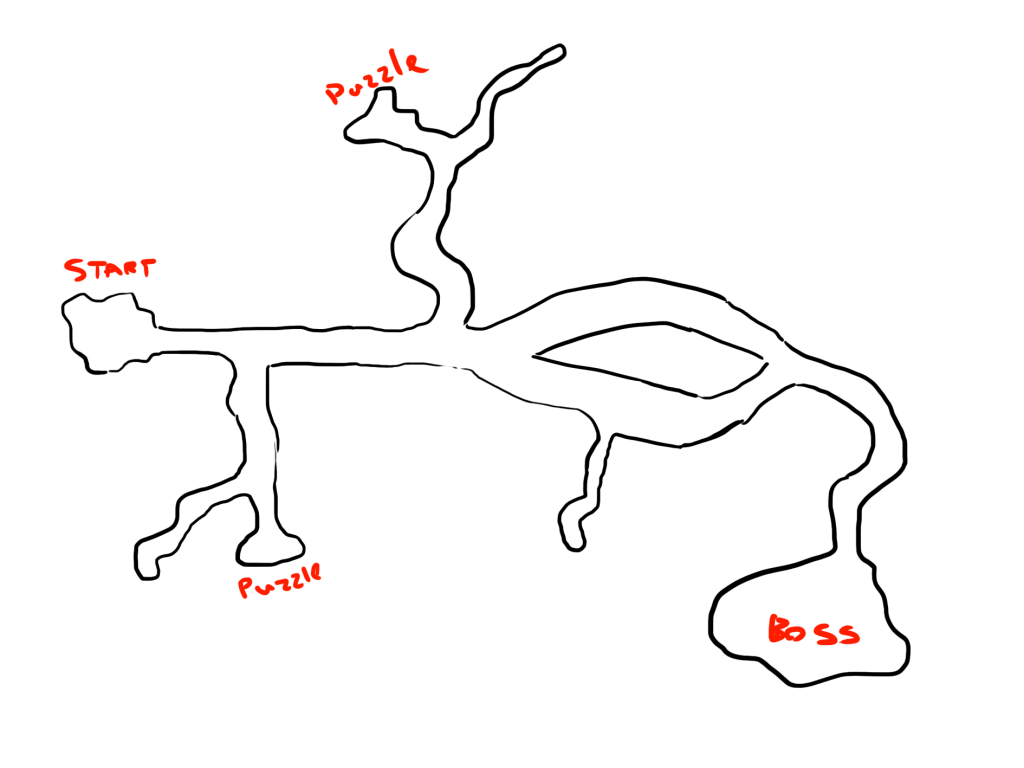
This was my first attempt at creating a map for the expanse level. However, when I showed it to my team, they said it was too simple for a supposed complex cave system – and I have to agree.
So, I did some researching on existing maps of caves and video game levels to see where I went wrong in my first attempt.

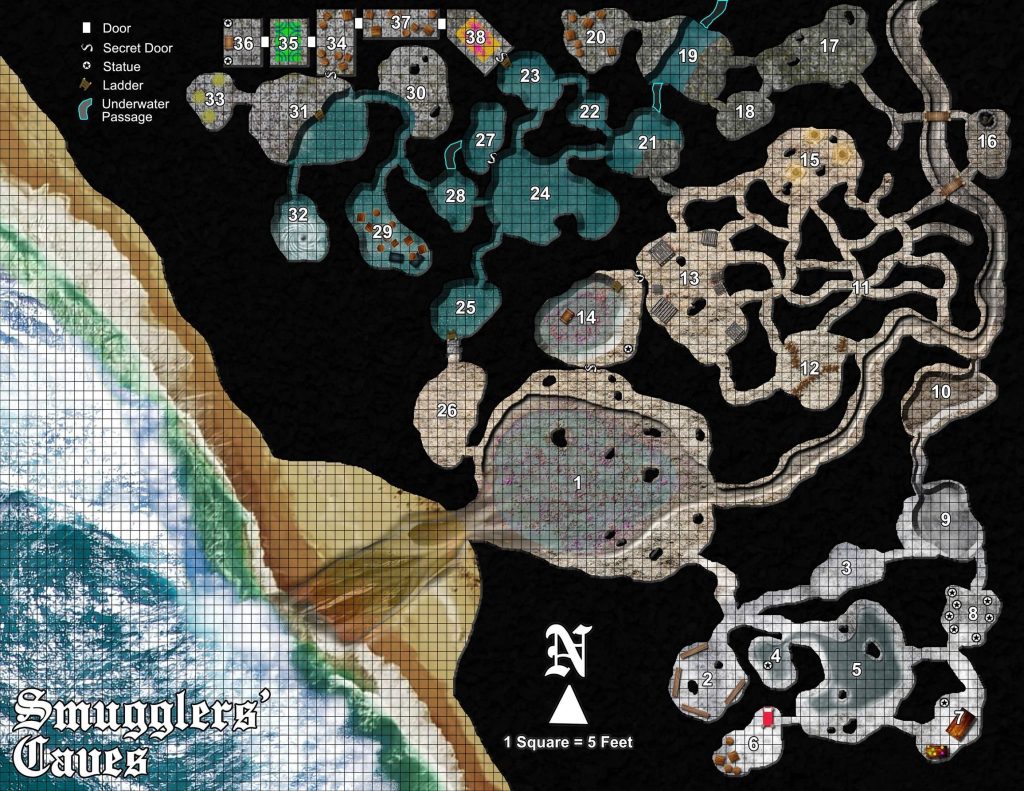
What I found is that caves have to have big open areas to break up the small, tight corridors that connect them. My previous map had just been corridors, with no areas to explore for the player.

After researching what makes a good cave map, I finally had another attempt. This one was much better received by the group.
My favourite part of this level idea is having a massive shaft section where the player can swim around in an open space and find hidden passages that lead to treasures. However, to add tension and excitement to this section, we decided to add a shark that chases the player around whilst in the open space.

The shaft section also follows a game design principle called “funnel before the reveal”, which adds excitement via the contrast of the tight space beforehand, compared to the large space in front of the player.
Week 9 (27th March – 2nd April) – Blocking Out & Researching Octopus Boss:
Blockout:
At long last it was finally time to start using Unreal Engine.
A blockout is a rough draft level built with simple shapes, without any details or polished art assets. They are useful when designing a level as you can playtest them, unlike a map, and it is easy and cheap to delete and change things – unlike finalised assets. (The Level Design Book, 2022).

To make sure everything is the right scale, I always use the yellow mannequin that comes with Unreal Engine, as it is roughly the size of the average human. Without a reference for the height of a human, your level could very easily become over/undersized. It is also useful for specific assets (such as seaweed or fish), as you can always research how large they are in real life compared to a human and scale accordingly in Unreal.
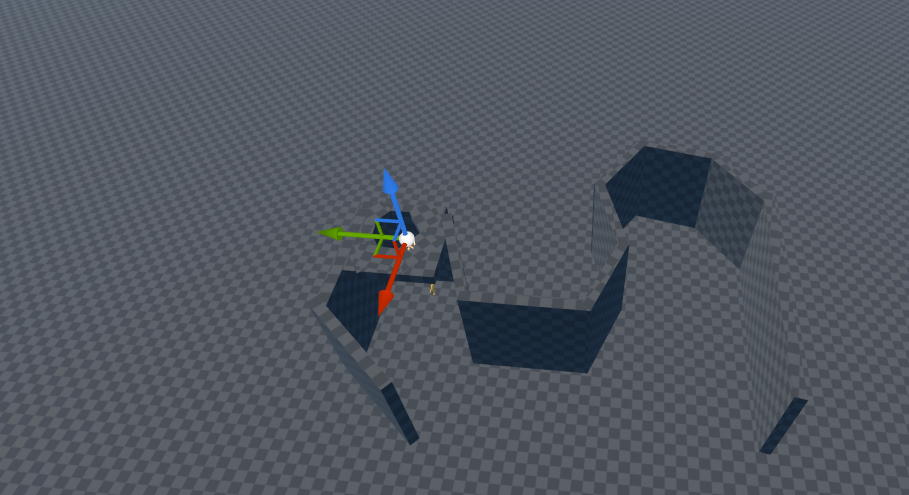


I ended up blocking out the entire first area of the game and got a good idea of the scale of the level in doing so. However, just this section small was very time consuming and I still had 90% of the level to go. At this point, due to deadlines, I decided it would be better to just take the risk with actual assets than to continue blocking out.
Since I knew exactly what assets I was going to use (rocks from the Soul Cave pack), this wasn’t as big a risk than if I had no idea. This small section still gave me an idea of the scale of the level however, and so it was not a complete waste.
Octopus Boss:

In the expanse level, one of the bosses was going to be an octopus – which I was asked to model.
I once again created a Padlet to research various media related to octopuses. This was especially helpful as it gave me some good ideas to aid my design of the boss.
Link to Padlet: https://padlet.com/econyers2021/octo-boss-vl6a49o8q6op9udv
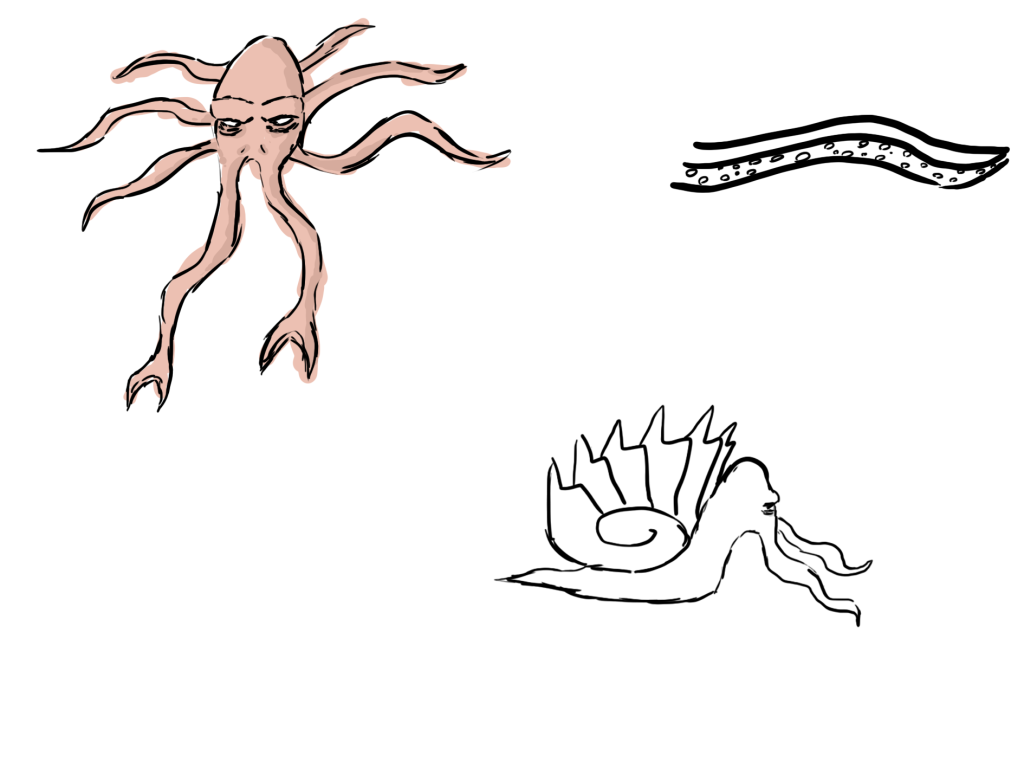
I didn’t want to just create a giant normal looking octopus for the boss as that would be rather boring for both me as a designer and the player.
So, I came up with a couple of different concepts. One in which the octopus has pincers on its front two tentacles and another that is a hybrid between a snail and an octopus.
Unfortunately we decided to cut this boss due to time restraints before I even got the chance to expand my ideas and model it. I believe it was the right choice, as we already had a few bosses and, as a team, we would rather see those ones be very polished than to have every boss rushed if we kept this one in the game.
Week 10 – 14 (3rd – 30th April) – Creating The Expanse:
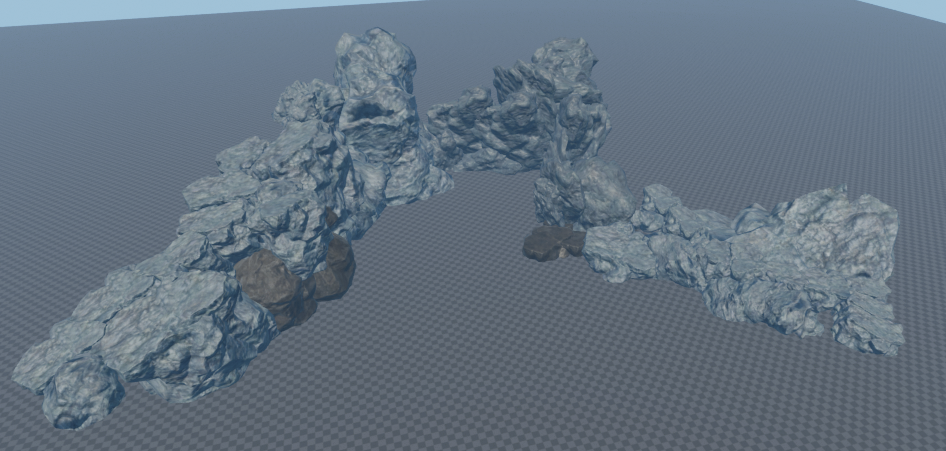



I began by creating a large landscape and then blocking out the area that I had created previously – this time with rocks.
My plan was to create the basic shape of the map first, before building the walls higher and adding a roof, as it makes it easier to change anything this way.
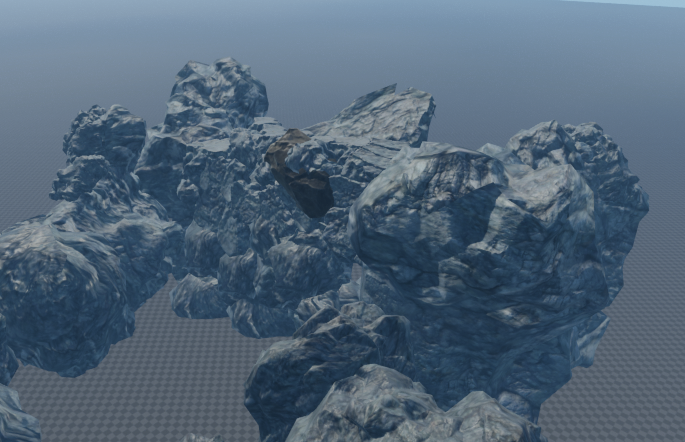
One thing that me and Jack discussed about having in this level is lots of height variation. Therefore, I created sections like these where the player will have to swim upwards to progress.

Vertical sections and variations of height in a level keep the player engaged. As Barclay suggested though, the player must be able to tell where to go next. To achieve this, I intend on putting light sources to attract the player upwards.
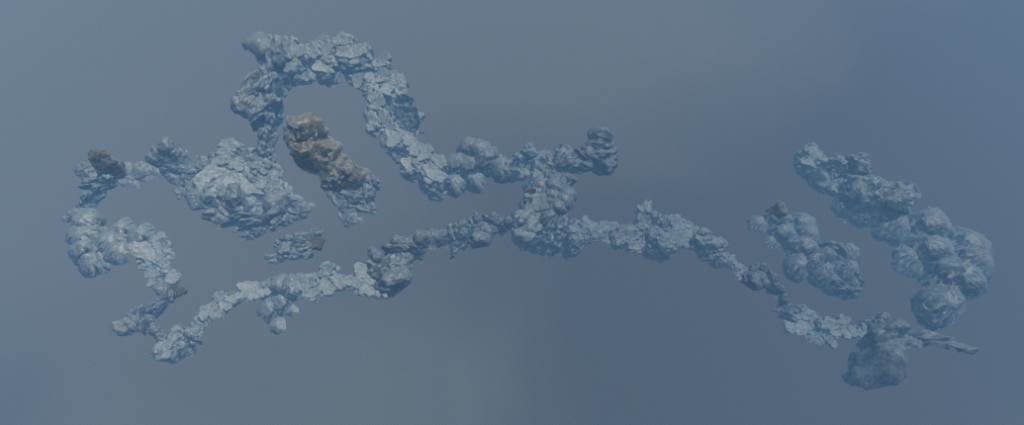
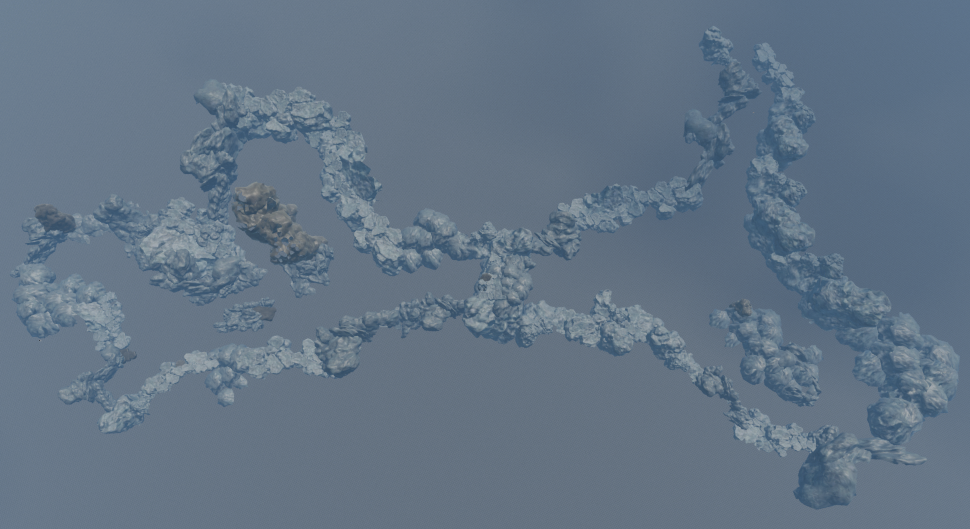

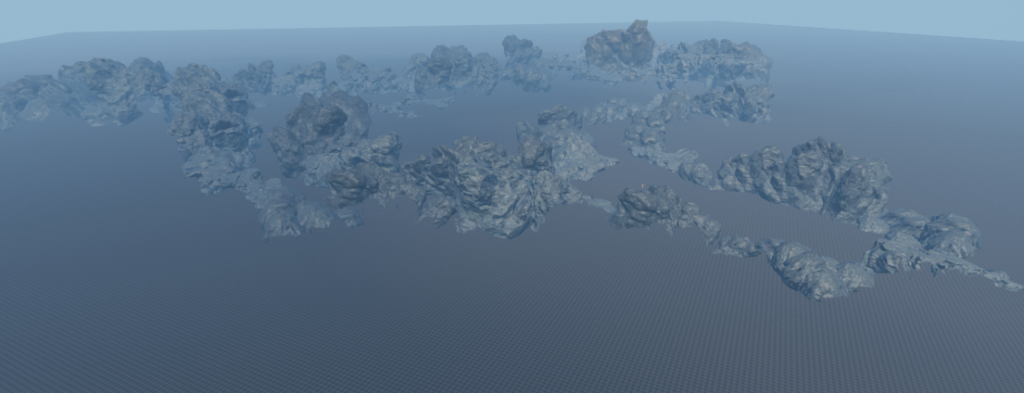

I continued to block out the level’s walls, using the default mannequin to get the size and proportions correct.

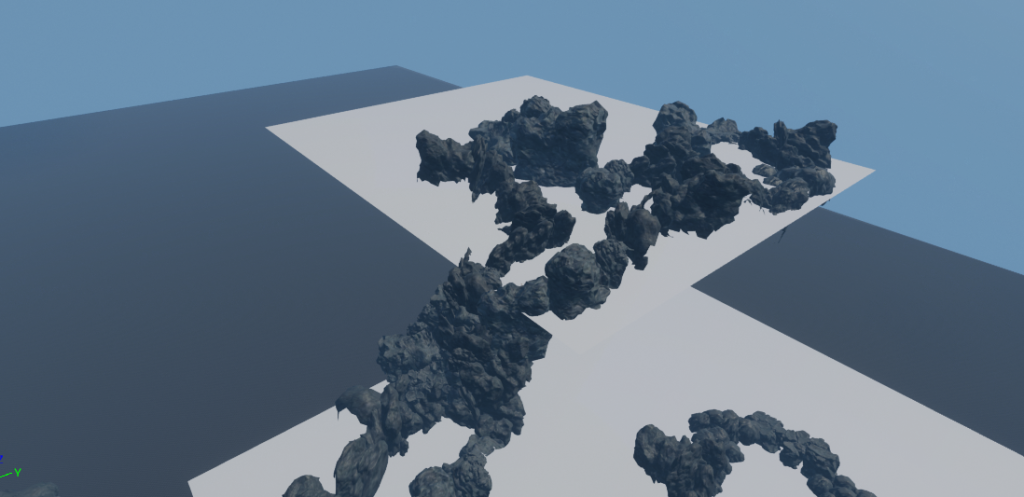

In order to achieve the height variation that I wanted in the level, I had to use multiple different planes. This is because I wanted sand on the bottom always and so each plane will have the sand texture applied – the player should not notice they are different planes due to the rocks hiding everything.
I was worried about the multiple planes messing up Jack’s water system, however thankfully it all worked in the end.
Importing My Level:
Until now I had been working in my own UE5 project, as the Soul Cave asset was free. The way we managed the project was by giving our money to Jack to buy assets that we found extremally useful. Then, after he has all of the assets, he would send over the project file with all of them in. From there, I was hoping that I would be able import my level that I had been working on to that project with all of the paid assets in.
One problem that occurred however is due to the various different versions of Unreal Engine. I had been working in 5.1, however Jack has created the project with every asset in 5.0.
So, when I downloaded that project and tried to load it, an error occurred. Thankfully, Unreal realised this and asked if I wanted to clone and transform the project to 5.1.
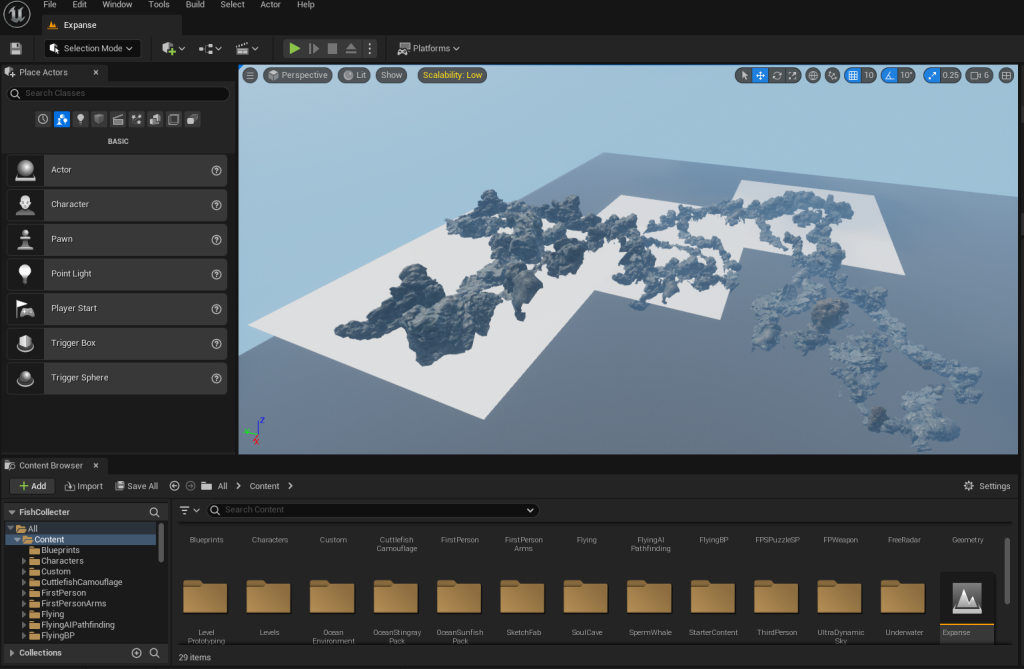
After a long time waiting, the project finally loaded and I could migrate my level across. In the screenshot above you can see my level is now in the project with all of the paid assets, meaning I could use them when I needed to.
Creating The Shaft Section:


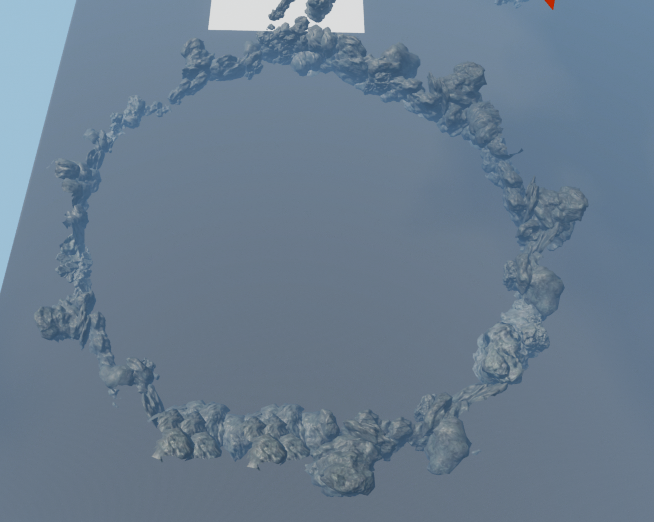
This was definitely the most time consuming part of making this level, however, I believe it was worth it.
I started by doing what I did for the rest of the level in blocking out the basic shape of it, in this case it was just a circle.


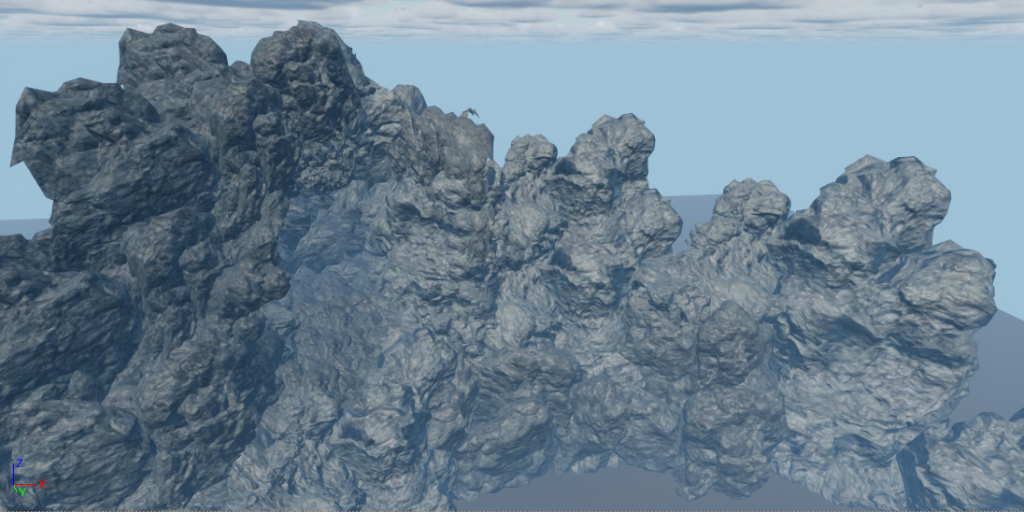


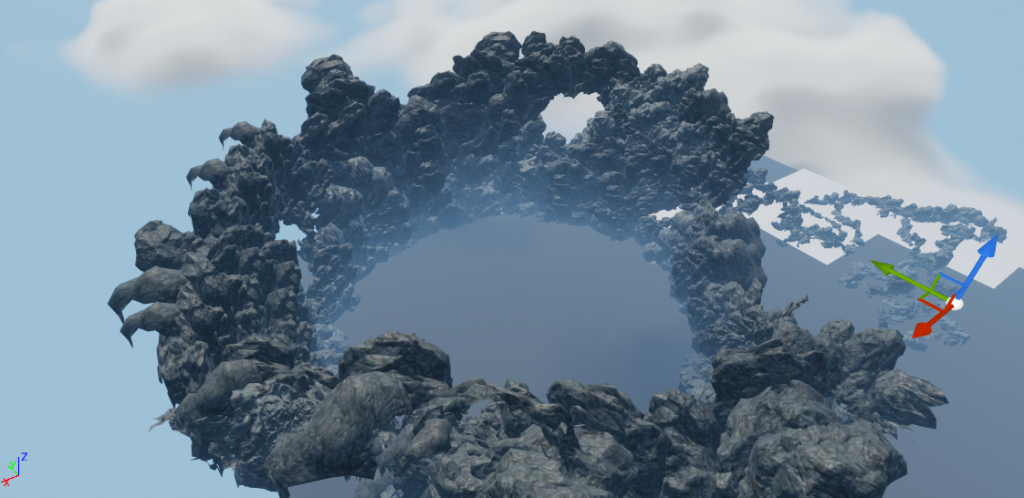
Once the basic foundations had been made, I then built it upwards to what I believed to be a suitable height. It was extremely hard to keep a sensible scale here, as I wanted it to be a large and spacious area for the player to explore, whilst not being so big that they are swimming for 2 minutes straight just to get to their objective.
To make sure this didn’t happen I used the aforementioned mannequin, as well as constantly play testing the level myself to get a sense of the scale of the environment.

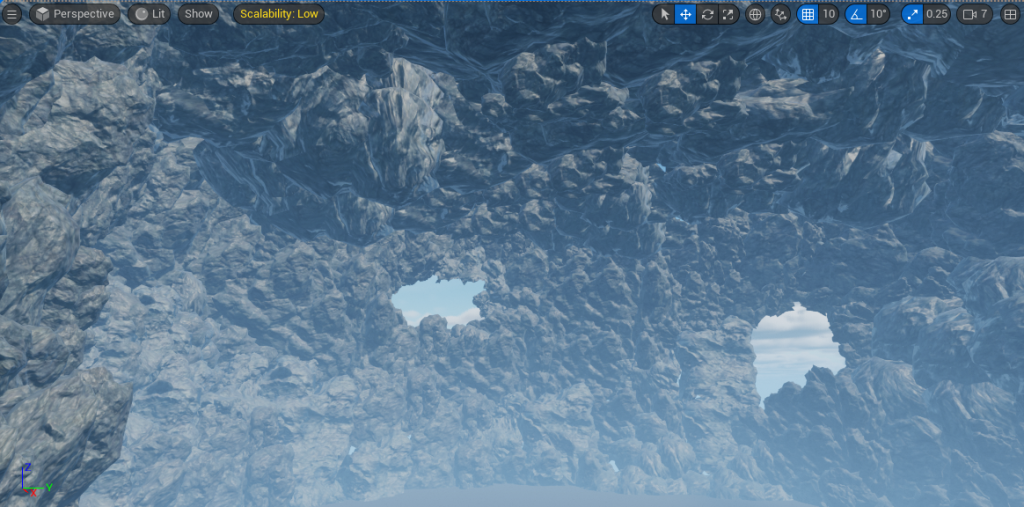
Since I was happy with the height and size of this section, I decided to put the roof on. This was a mistake as I should have checked with my team first to see if they agreed with me about it being the right size. As it turns out, they didn’t.

This was one of those times when someone asks you to do something they think is a quick and easy change, but in fact it is far from that.
This being something that was awkward to change was completely my fault though, as I should have put all of the roof rocks in a separate group so I could select them all together easily. Instead, I had to select each one individually.

I managed to eventually select every rock and move it upwards to the new, more suitable height.
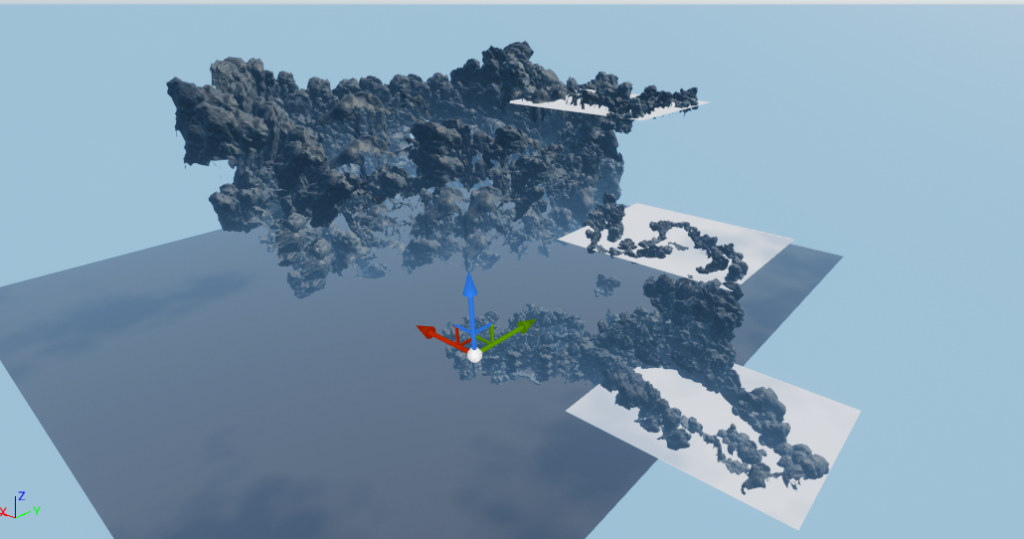
As always though, complications arose. What I found was that because we wanted the entrance to the shaft area to be near the top, I had to move the prior plane upwards with the roof. This led to a section where the player was just swimming upwards for 20 seconds, which was boring.
So, I had to grab each plane in the level and move it up slightly, so that each time the player moved upwards to a new section, they didn’t get bored.
Hermit Crab Boss Arena:
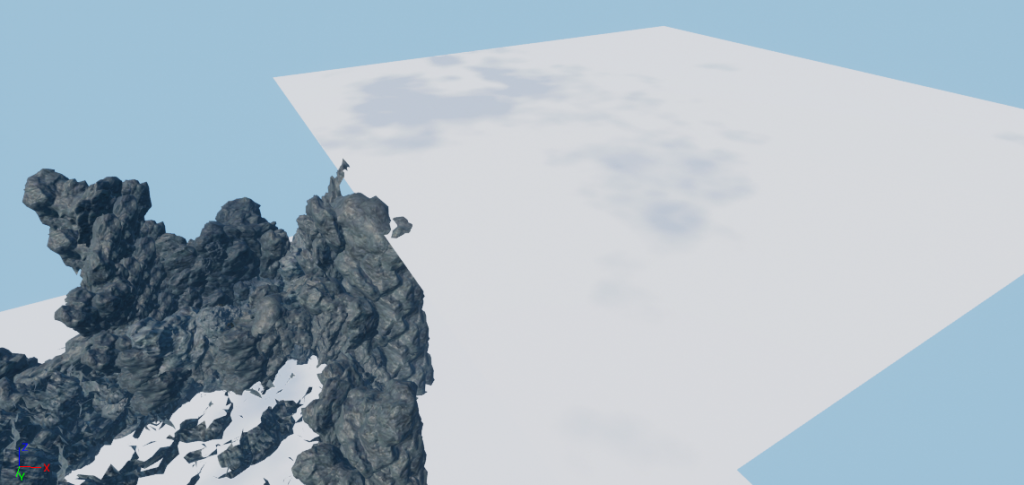


For the hermit crab arena, I created it in the Expanse level, but I made sure to put all of the rocks used for it in a separate folder.
I did this so that I could then create a new empty level and copy all of the boss arena over to it easily. This should reduce lag when fighting the boss as the rest of the level will be unloaded.
Foliage:
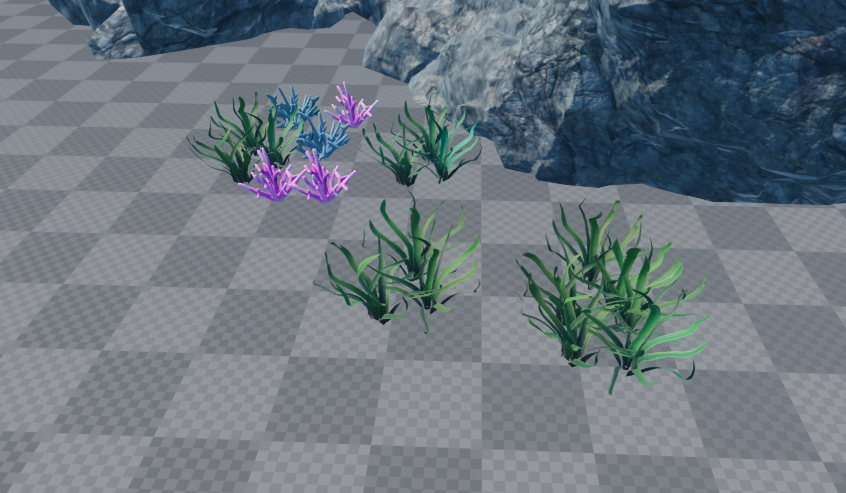

Adding various foliage such as seaweed and coral really helped bring the level to life. I made sure not to add too much as I wanted the plant life to attract the player towards where they needed to go.
Puzzles:
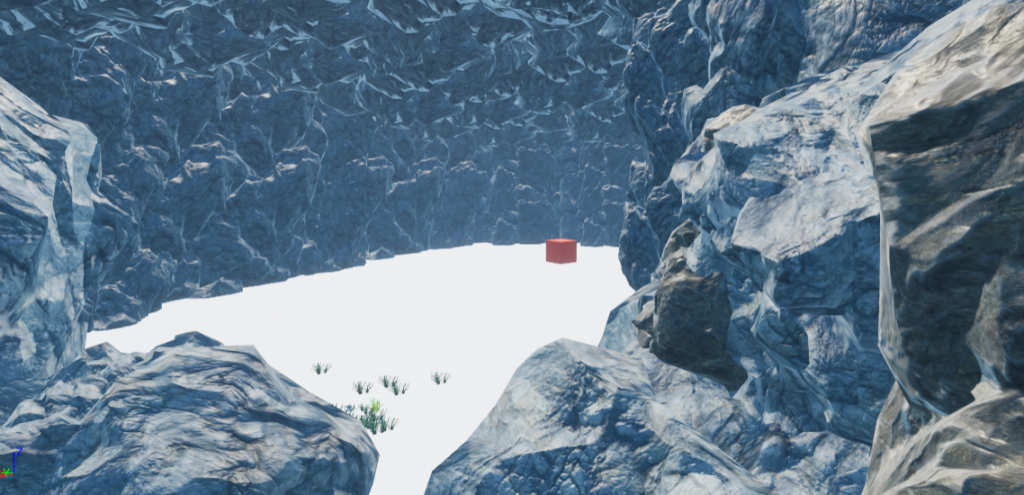
Me and Jack communicated beforehand that wherever there is a red cube in my level, is where a puzzle should be placed. This made it really easy for him to get the puzzles other team members had worked on, and drag them into my level.
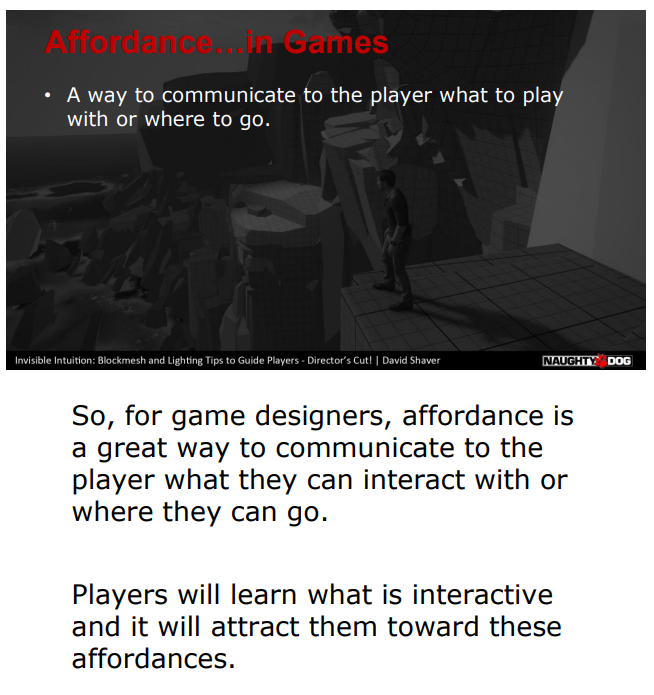
After the player sees that the plant life leads them down the correct path a couple times, hopefully that will create an affordance with them that the foliage shows them where to go. Of course, they could just miss this entirely since it’s pretty subtle, but after enough times the player should subconsciously associate the two.
Finishing Touches:
Jack had set a deadline of the 28th April for the levels to be submitted to him. Whilst he did apologise for being so strict about the deadline, it was a useful experience to work on one and helped my productivity a lot. Deadlines are a common thing in the video game industry and so working on one now was very valuable to me.
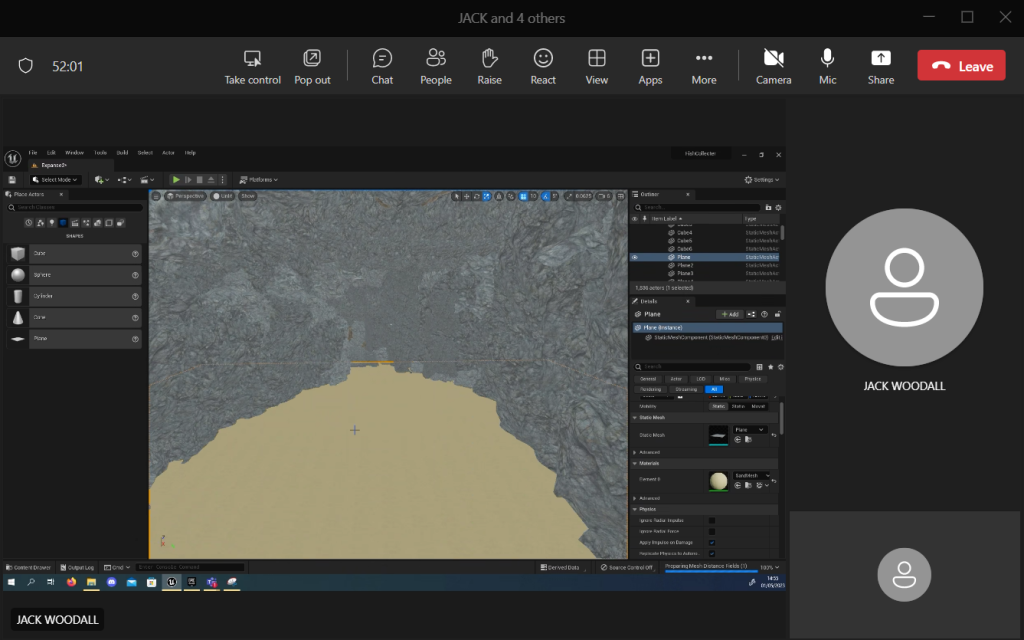
Once I had sent him my finished Expanse level and boss arena, Jack and myself went into a Teams meeting.
In this call, I helped direct him on the final touches of the level, such as adding the underwater effect, placing more foliage, as well as adding the puzzles.
Walkthrough:
A walkthrough of the level in the state I sent it to Jack (before water effects, puzzles etc.):
YouTube Link: https://www.youtube.com/watch?v=gEW1eo13XDk
Finished Level Shots:

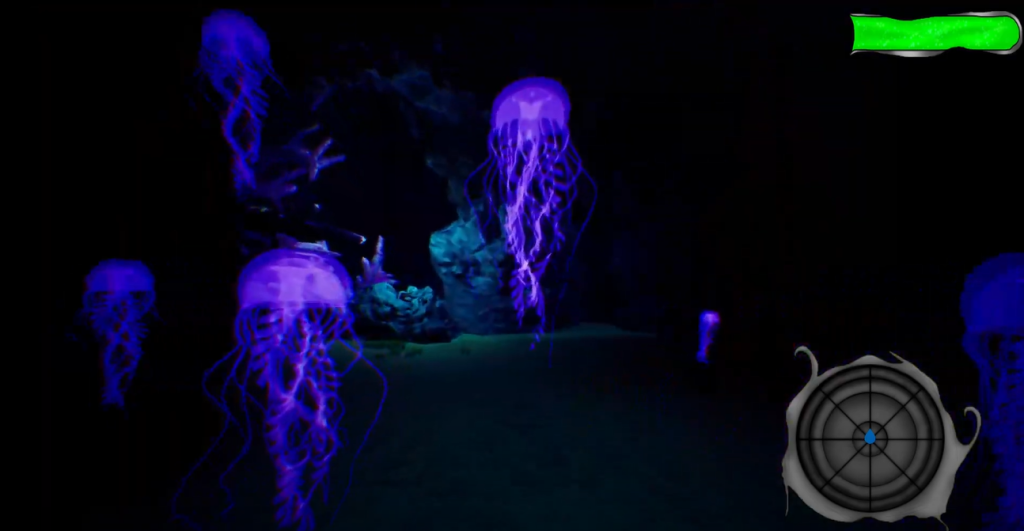
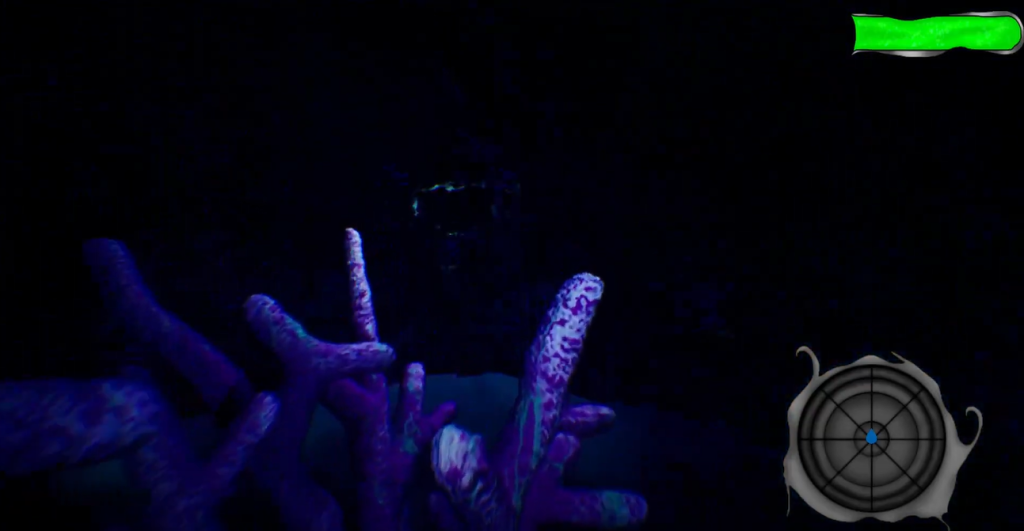

References:
- Barclay, M. (2016) My Level Design Guidelines [Blog post]. MikeBarclay. 13 May. Available online: http://www.mikebarclay.co.uk/my-level-design-guidelines/ [Accessed 05/04/2023].
- Jon (2015) How to Draw a Cave [Blog post]. Fantastic Maps. 12 August. Available online: http://www.fantasticmaps.com/2015/08/how-to-draw-a-cave/ [Accessed 22/03/2023].
- Norberg, T. (2020) #leveldesign tip of the day! FUNNEL BEFORE REVEAL! Think as much about what the player has done as what the player is about to do! [Tweet]. 30 June. Available online: https://twitter.com/the_norberg/status/1277862089584005120?lang=en [Accessed 23/03/2023].
- Shaver, D. (2018) Invisible Intuition : Blockmesh and Lighting Tips to Guide Players. Available online: http://davidshaver.net/DShaver_Invisible_Intuition_DirectorsCut.pdf [Accessed 05/04/2023].
- The Level Design Book (2022) Blockout. Available online: https://book.leveldesignbook.com/process/blockout [Accessed 28/03/2023].